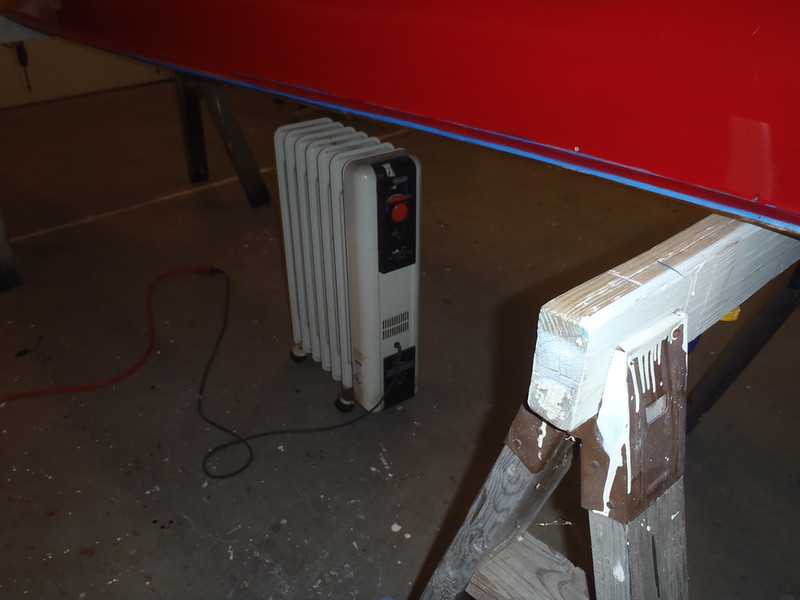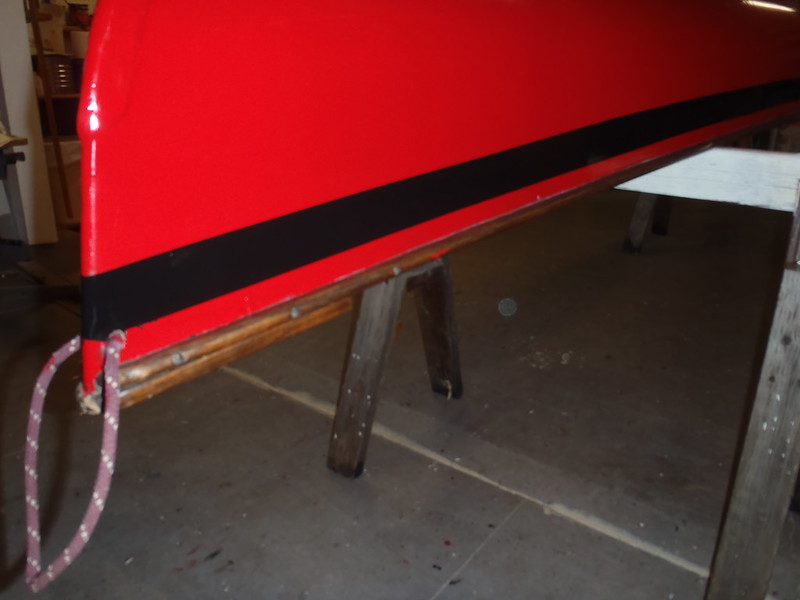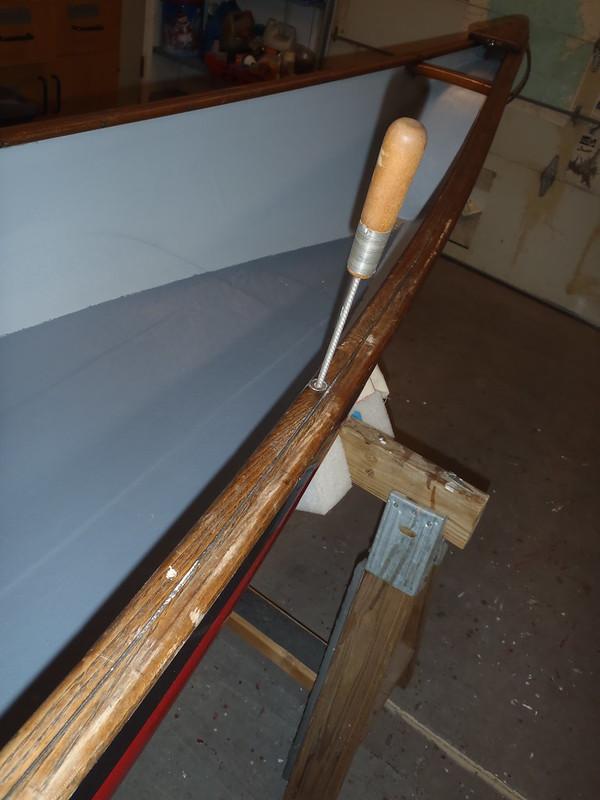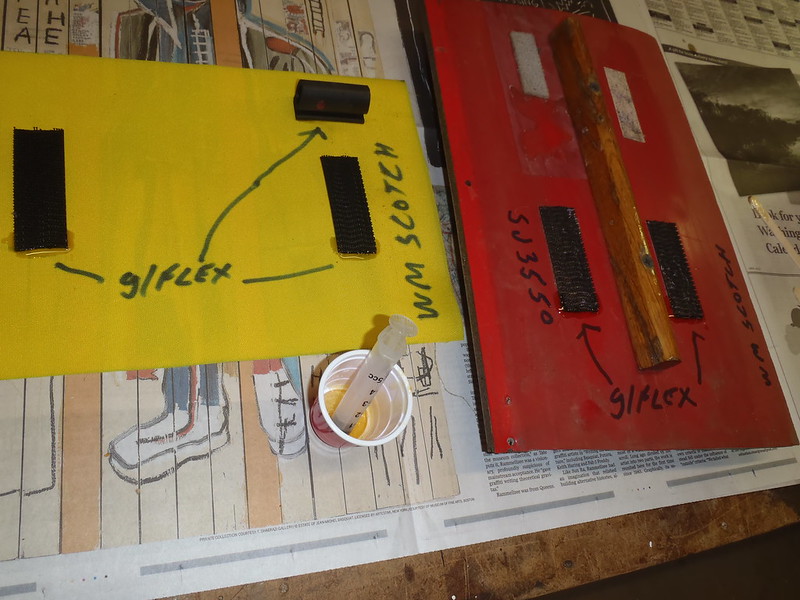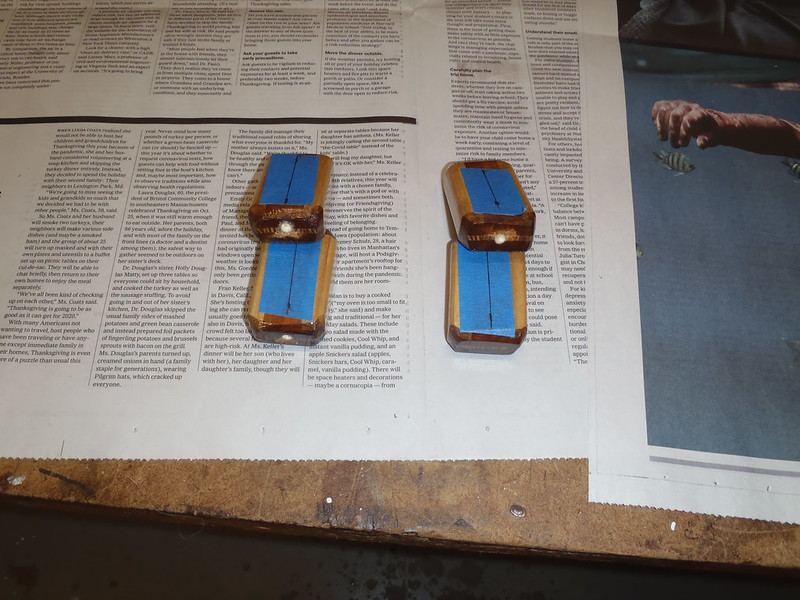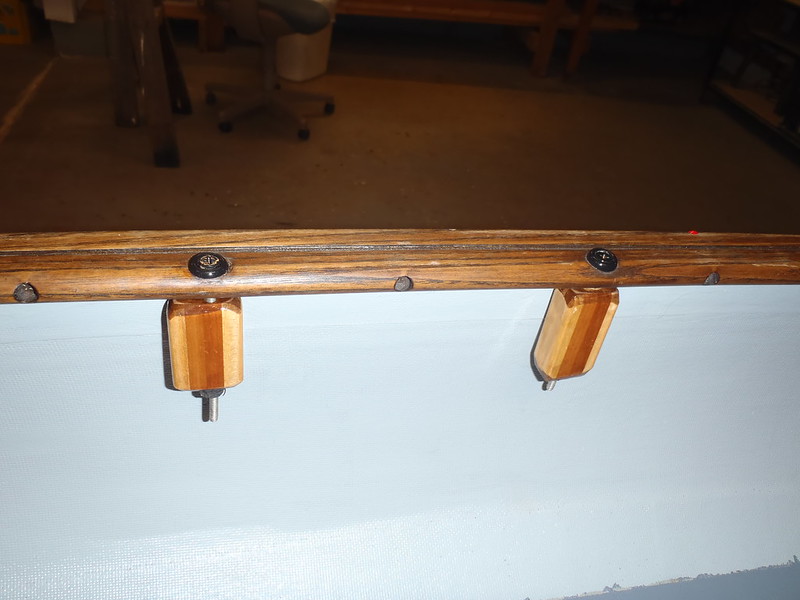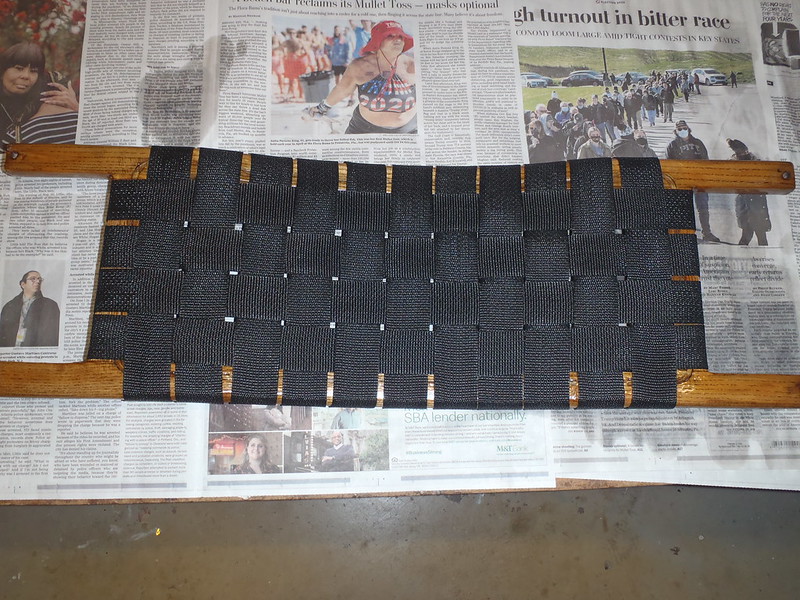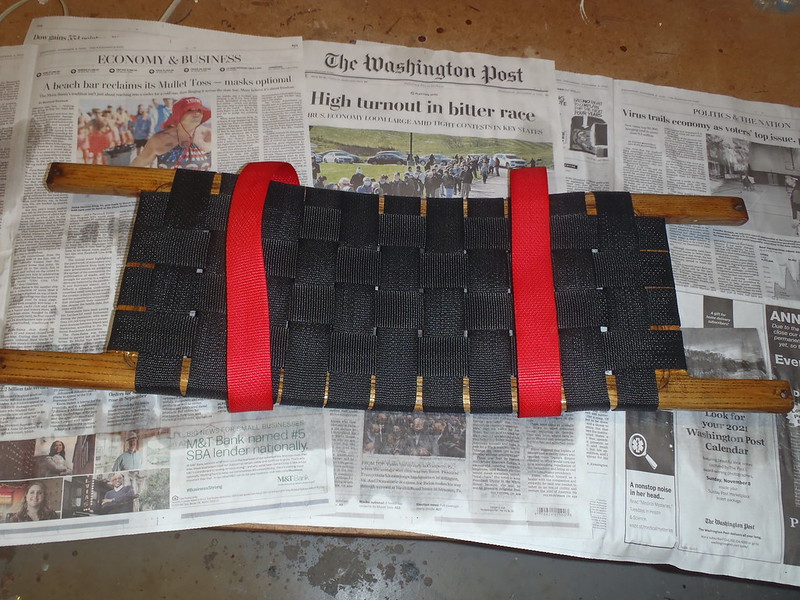G
Guest
Guest
This will run long, lots of wait time between epoxy work, paint and varnish coats. I’m already a week into it and not halfway done. Alan Gage or Jim Dodd could have built a stripper and paddled it in the time I’ve been at this refurbishment so far.
TLDR: I refurbished a 1991 Mad River Independence I first rebuilt 20 years ago. I’ve learned a trick or two since then and plan to use them all. The Independence needs some of everything except new gunwales, so I will post progress reports/photographs and put it all in one place.
1991 was the first year Mad River offered the Indy (1991 – 2002). If you know the Indy you know it’s a keeper.
That Indy has history beyond being first year of production. It was a freebie. A local paddler who lived lakeside bought it to noodle around in. She then got into whitewater, and outfitted it with floatation and thigh straps, and ran WW with it for a few years. Don’t see many Indy’s outfitted like that, and she beat the stuffing out of it, spider cracking both chines for several feet and busting the hull in one place.
She eventually bought WW boat(s), left the Indy in the dirt by the lakeside, and didn’t even look at it for a few years. When she finally did look the gunwales had rotted; just a few years with the gunwales in the dirt was enough. Not the last freebie I received from that treatment.
Most of the decayed gunwales fell off in pieces when I turned it over for a freebie looksee; I had to come back the next weekend with some pre-bent lengths of thin lumber, a battery drill and drywall screw them in place just to get that forlorn Indy home on my racks.
On the shop scale the Indy weighs 49 lbs with my oversized wood gunwales & deck plates and original-owner kevlar felt skid plates. Catalog speced at 45 in glass, down to 35lbs in kevlar and 29lbs in kev light. Of course if she had bought a KL Indy there might have been only random puzzle pieces left after her WW adventures.
Her WW abuse, and my less-than-stellar repairs, left me with this. Poorly executed six foot long repairs on both chines. At least I tinted the resin.
 PA270056 by Mike McCrea, on Flickr
PA270056 by Mike McCrea, on Flickr
 PA270053 by Mike McCrea, on Flickr
PA270053 by Mike McCrea, on Flickr
A truly hideous patch on the inside. What was I thinking? What was I doing?
 PA270064 by Mike McCrea, on Flickr
PA270064 by Mike McCrea, on Flickr
I laid some equally fugly 2” glass tape along the naked sheerline inside. I didn’t even try to hit the old holes while screwing in the new temp-transport gunwales, so there was a Swiss cheese of 100+ holes along the sheerline, and I wanted to bolster those edges before drilling yet more holes for new gunwales.
Lots of smutch on the inside where the thigh strap was glued in, and where she had dripped god-knows-what that ain’t coming off even sanding, maybe dark oil or varnish on the original gunwales.
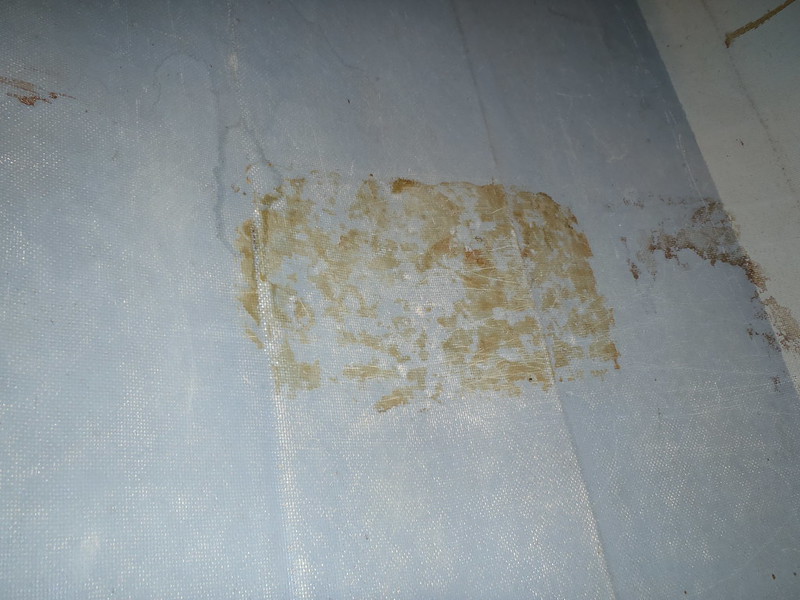 PA270065 by Mike McCrea, on Flickr
PA270065 by Mike McCrea, on Flickr
 PA270066 by Mike McCrea, on Flickr
PA270066 by Mike McCrea, on Flickr
I have a Make-Indy-Beautiful-Again plan. The Indy deserves some beautification, the bow deck plate is stamped “Reward Boat”
 PA270060 by Mike McCrea, on Flickr
PA270060 by Mike McCrea, on Flickr
At the time that stampage was done for a friend who lusted after the Indy, and eventually luck bagged into his own, a purple kevlar Indy in perfect condition, in a bizarre 3-way trade. But that’s another story - a dead van traded to a mechanic for a dead antique outboard traded to a marina owner for the plum crazy purple kevlar Indy. Only Dave could pull that off)
TLDR: I refurbished a 1991 Mad River Independence I first rebuilt 20 years ago. I’ve learned a trick or two since then and plan to use them all. The Independence needs some of everything except new gunwales, so I will post progress reports/photographs and put it all in one place.
1991 was the first year Mad River offered the Indy (1991 – 2002). If you know the Indy you know it’s a keeper.
That Indy has history beyond being first year of production. It was a freebie. A local paddler who lived lakeside bought it to noodle around in. She then got into whitewater, and outfitted it with floatation and thigh straps, and ran WW with it for a few years. Don’t see many Indy’s outfitted like that, and she beat the stuffing out of it, spider cracking both chines for several feet and busting the hull in one place.
She eventually bought WW boat(s), left the Indy in the dirt by the lakeside, and didn’t even look at it for a few years. When she finally did look the gunwales had rotted; just a few years with the gunwales in the dirt was enough. Not the last freebie I received from that treatment.
Most of the decayed gunwales fell off in pieces when I turned it over for a freebie looksee; I had to come back the next weekend with some pre-bent lengths of thin lumber, a battery drill and drywall screw them in place just to get that forlorn Indy home on my racks.
On the shop scale the Indy weighs 49 lbs with my oversized wood gunwales & deck plates and original-owner kevlar felt skid plates. Catalog speced at 45 in glass, down to 35lbs in kevlar and 29lbs in kev light. Of course if she had bought a KL Indy there might have been only random puzzle pieces left after her WW adventures.
Her WW abuse, and my less-than-stellar repairs, left me with this. Poorly executed six foot long repairs on both chines. At least I tinted the resin.
 PA270056 by Mike McCrea, on Flickr
PA270056 by Mike McCrea, on Flickr PA270053 by Mike McCrea, on Flickr
PA270053 by Mike McCrea, on FlickrA truly hideous patch on the inside. What was I thinking? What was I doing?
 PA270064 by Mike McCrea, on Flickr
PA270064 by Mike McCrea, on FlickrI laid some equally fugly 2” glass tape along the naked sheerline inside. I didn’t even try to hit the old holes while screwing in the new temp-transport gunwales, so there was a Swiss cheese of 100+ holes along the sheerline, and I wanted to bolster those edges before drilling yet more holes for new gunwales.
Lots of smutch on the inside where the thigh strap was glued in, and where she had dripped god-knows-what that ain’t coming off even sanding, maybe dark oil or varnish on the original gunwales.
 PA270065 by Mike McCrea, on Flickr
PA270065 by Mike McCrea, on Flickr PA270066 by Mike McCrea, on Flickr
PA270066 by Mike McCrea, on FlickrI have a Make-Indy-Beautiful-Again plan. The Indy deserves some beautification, the bow deck plate is stamped “Reward Boat”
 PA270060 by Mike McCrea, on Flickr
PA270060 by Mike McCrea, on FlickrAt the time that stampage was done for a friend who lusted after the Indy, and eventually luck bagged into his own, a purple kevlar Indy in perfect condition, in a bizarre 3-way trade. But that’s another story - a dead van traded to a mechanic for a dead antique outboard traded to a marina owner for the plum crazy purple kevlar Indy. Only Dave could pull that off)






















